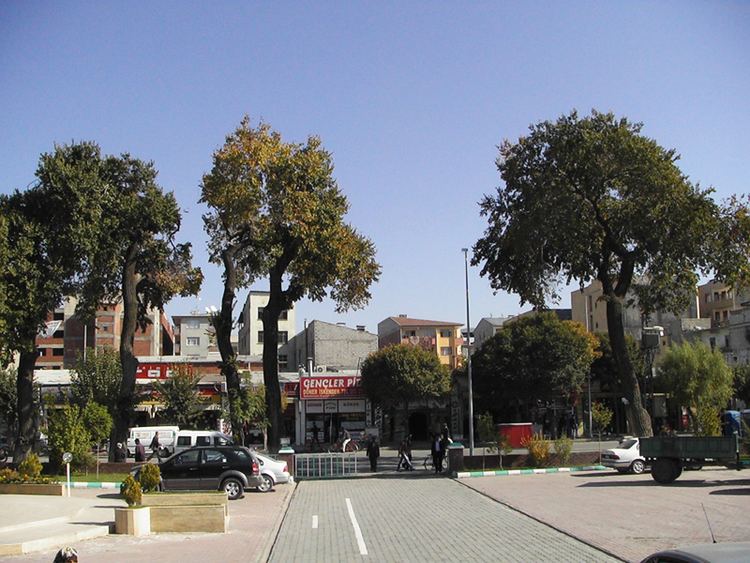Subregion Ağrı | Region Northeast Anatolia Vehicle registration 76 Area code 476 Team Igdirspor | |
 | ||
Iğdır Province (Turkish: Iğdır ili) is a province in eastern Turkey, located along the borders with Armenia, Azerbaijan (the area of Nakhchivan Autonomous Republic), and Iran. Its adjacent provinces are Kars to the northwest and Ağrı to the west and south. It occupies an area of 3,587 km² and population of 184,418 (2010 est.), it was 168,634 in 2000 (up from 142,601 in 1990). It was created from southeastern part of former Kars Province in 1993.
Contents
Map of I%C4%9Fd%C4%B1r, Turkey
Turkey's highest mountain, Mount Ararat (Ağrı Dağı) is in Iğdır, but much of the land is a wide plain far below the mountain. The climate is the warmest in this part of Turkey, cotton can be grown in Iğdır. Iğdır is where Noah is said to have thrived following the flood. The closed border with Armenia follows the Aras River.
The provincial capital is the city of Iğdır. The majority of the province's population is Kurdish, with Azerbaijanis making up the remainder.
Districts
Iğdır province is divided into 4 districts (capital district in bold):
History
Archaeological research has uncovered Hurrian settlements in the Iğdır region going back to 4000 BC. The area was part of the Urartu kingdom circa 800 BC. There is a Urartu statuary in the area. It remained under Urartian control until its transition to the Median Empire, Persian Empire, Alexander The Great, Orontid Dynasty of the Kingdom of Armenia. Seleucid, Parthian, Roman, Sassanid and Byzantine forces were prominent from the 4th century BC, followed by the Arab armies of Islam in 646. Turks, Georgians and Mongols fought through here for 400 years from 1064 onwards until the area was settled by Kara Koyunlu and then Ak Koyunlu Turkic tribes in the early 15th century.
For centuries, a constant warfare ensued between the two arch rivals, the Ottoman Empire and the Persian Empire from 1534 until 1746. The region, most of the time remaining in Persian hands, was officially ceded once again in 1746, when subsequently most of its land within the province of Iğdır today became part of the Erivan khanate, a Muslim principality in Persia. The northern part of the province remained in Persian hands until after the Russo-Persian War, 1826-1828 when it became part of the Russian Empire under the Treaty of Turkmenchay. Under Russian administration, the area became the Surmali uyezd (with its capital at the city of Iğdır) of the Armenian Oblast and later the Erivan Governorate. The southern half of the province remained in Ottoman hands through most of the 19th century but was incorporated into the Russian Empire as a result of the Russo-Turkish War of 1877-78.
Towards the end of World War I, the whole area came under the administration of the First Republic of Armenia as part of Ararat province. After an attack into the territory by the Turkish army, Iğdır was ceded to Turkey by the Soviet Union under the Treaty of Kars. A substantial Armenian population remained in the area throughout this history of struggle between great powers. Armenians formed the ethnic majority in the city of Iğdır itself until 1919–1920 when most either died or fled due to starvation and Turkish–Armenian War. It was part of Beyazıt Province between 1922 and 1927, part of Ağrı Province (created after moving center of Beyazıt one from Beyazıt to Karaköse) between 1927 and 1934, and finally part of Kars Province between 1934 and 1993 before becoming separate province.
Demographics
According to 1886 census, Iğdır Province (not included Tuzluca and Karakoyunlu) had 30,647 people. 49.6% of them Armenians, 38.7% of them are Azerbaijanis and 11.7% of them are Kurds. Karakoyunlu (Dashburun) had 20,520 people. 11.0% of them Armenians, 63.5% of them are Azerbaijanis and 25.4% of them are Kurds. Tuzluca (Kulp) had 19,899 people. 23.3% of them Armenians, 47.5% of them are Azerbaijanis and 29.3% of them are Kurds.
Today, Iğdır has a mixed population of Azerbaijanis and Kurds, both of whom comprise roughly half of the population, the former primarily inhabiting the north and east of the province and the latter inhabiting the south and west of the province. Political scientist Nicole Watts suggests a majority of the province's population are Kurds (as of 2010).
The Kurds are Sunni Muslims belonging to the Shafi school while Azerbaijanis are Shia Muslims belonging to Ithnā‘ashariyyah school. The rural areas of Iğdır province have a higher population density (30 inhabitants/km²) than those of neighbouring provinces.
